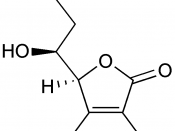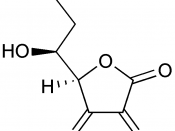Introduction
Ascorbic acid, commonly known as Vitamin C, is important to the human diet. It helps the body form connective tissue, bone, teeth, blood vessel walls, and assists the body in assimilating iron and amino acids. A diet deficient in Vitamin C may cause a person to develop scurvy. Symptoms of this disease, which include joint stiffness, nose bleeds, swollen and bleeding gums, livid spots on skin, and prostration (extreme physical weakness), can be prevented by adding Vitamin C to one's diet. Plants and some animals make their own Vitamin C, but humans do not. For this reason, humans need to seek Vitamin C from other sources.
Vitamin C is also an anti-oxidant. This means that it will help prevent oxidation. Consider foods that contain little or no Vitamin C, such as apples and bananas. After exposure to the air, these fruits turn brown. Now consider foods that contain a large amount of Vitamin C, such as oranges, lemons, and limes.
When these fruits are exposed to the air, they do not turn brown. This is due to Vitamin C's ability as an anti-oxidant. (http://www.rohmhaas.com/company/plabs.dir/exp12.htm)
Vitamin C is an important anti-oxidant, helps protect against cancers, heart disease, stress, it is part of the cellular chemistry that provides energy, it is essential for sperm production, and for making the collagen protein involved in the building and health of cartilage, joints, skin, and blood vessels. Vitamin C helps in maintaining a healthy immune system, it aids in neutralizing pollutants, is needed for antibody production, acts to increase the absorption of nutrients (including iron) in the gut, and thins the blood. Just to mention its most important functions. (http://www.naturalhub.com/natural_food_guide_fruit_vitamin_c.htm)
Observations
As I was drinking a glass of orange juice from the jug when I realized that it tasted...


